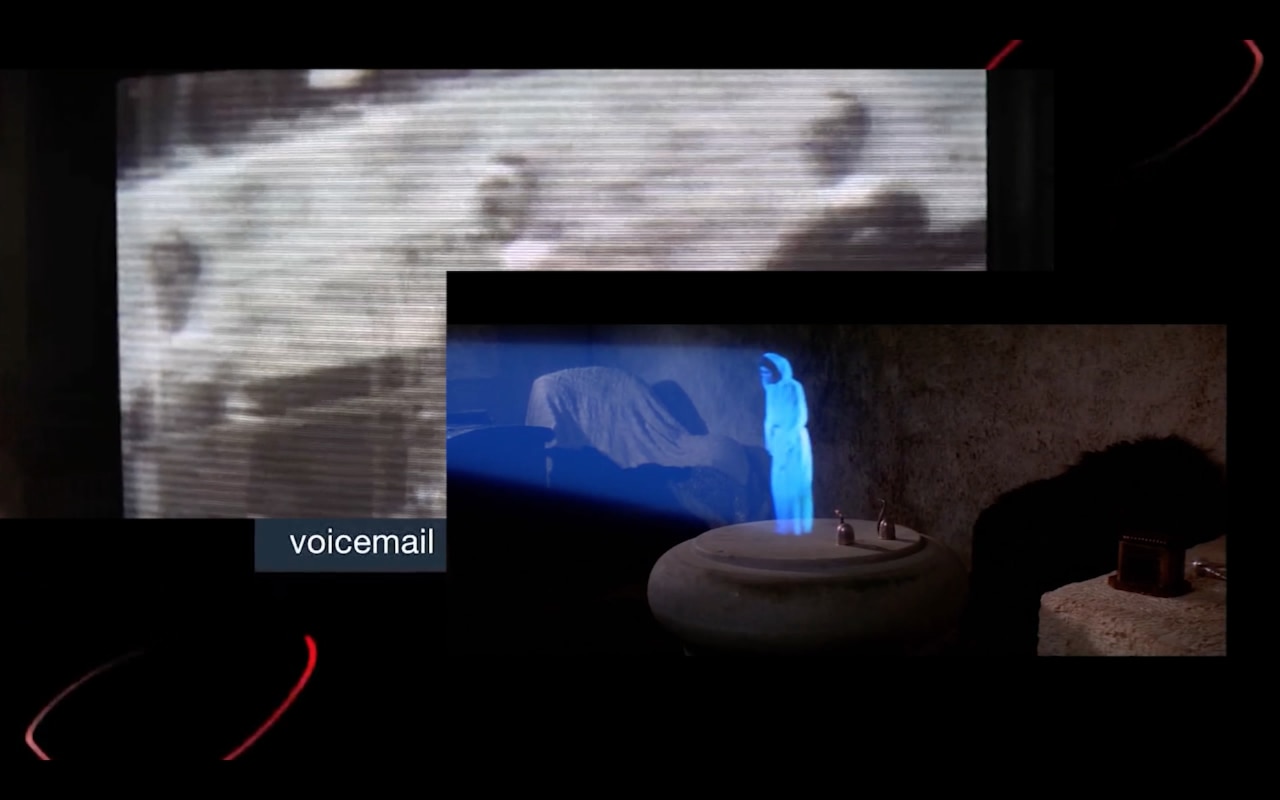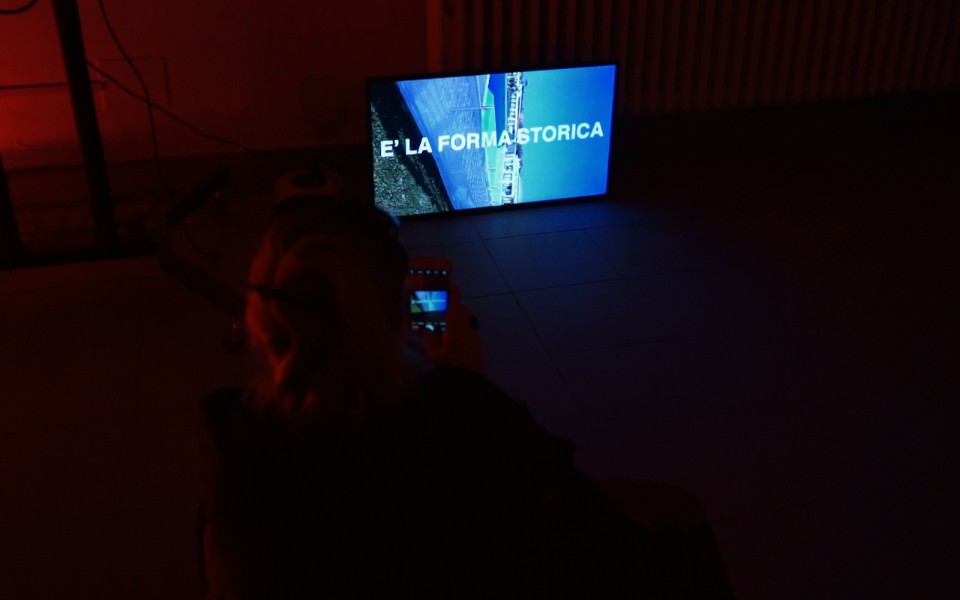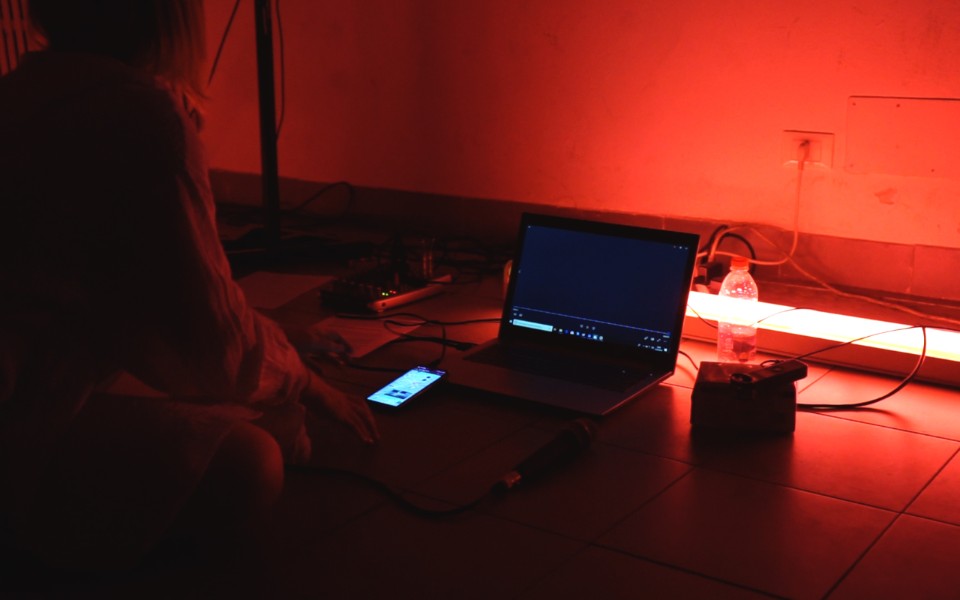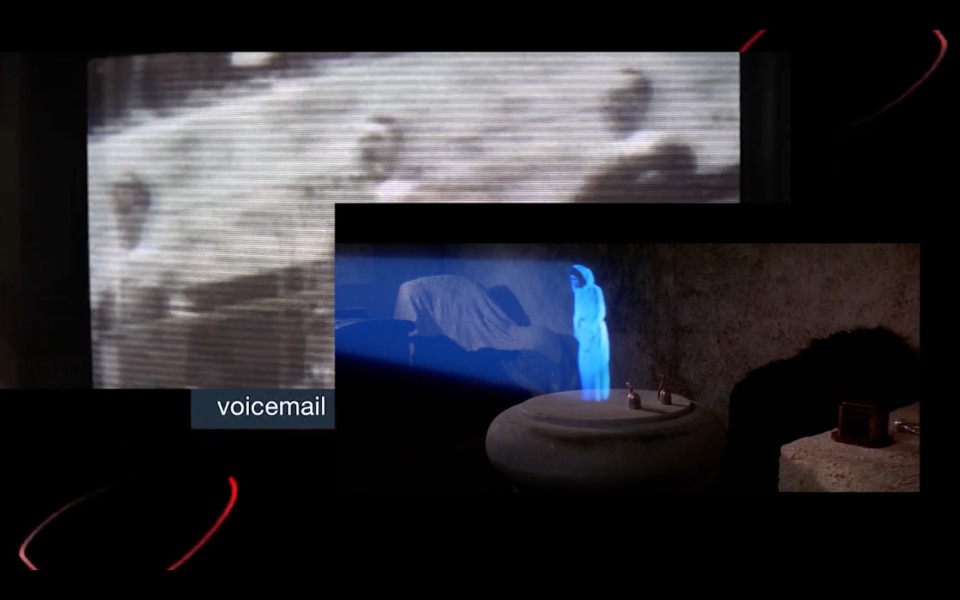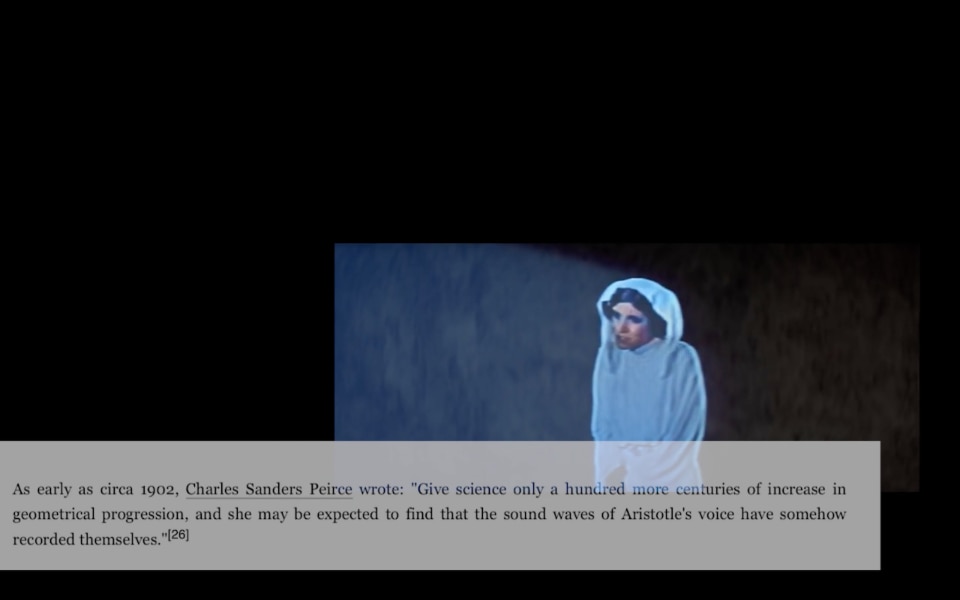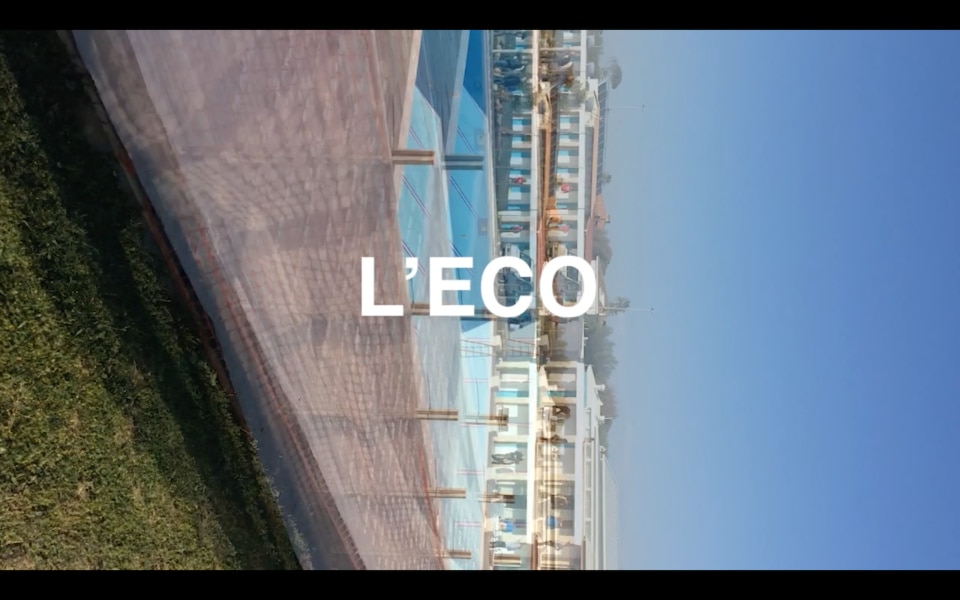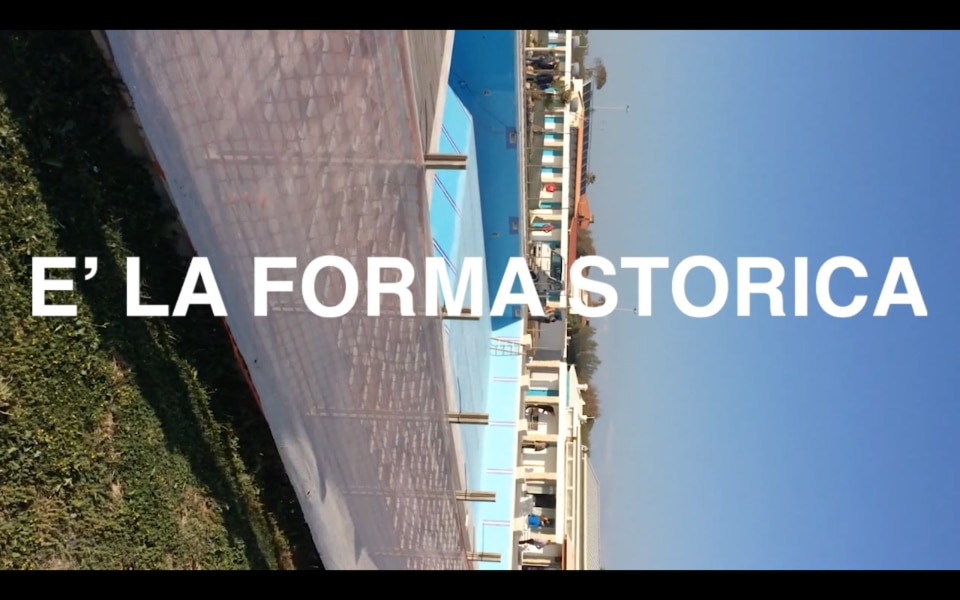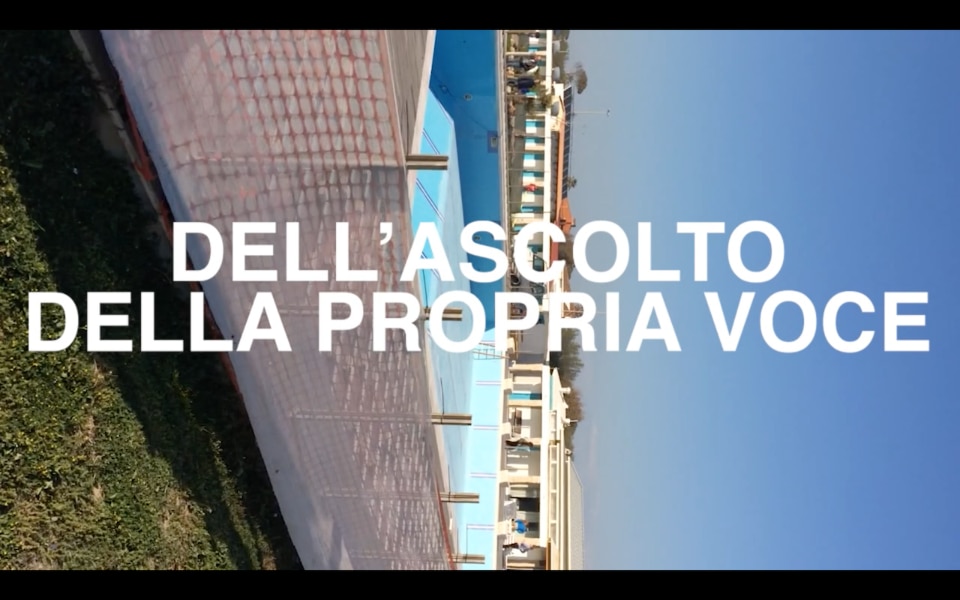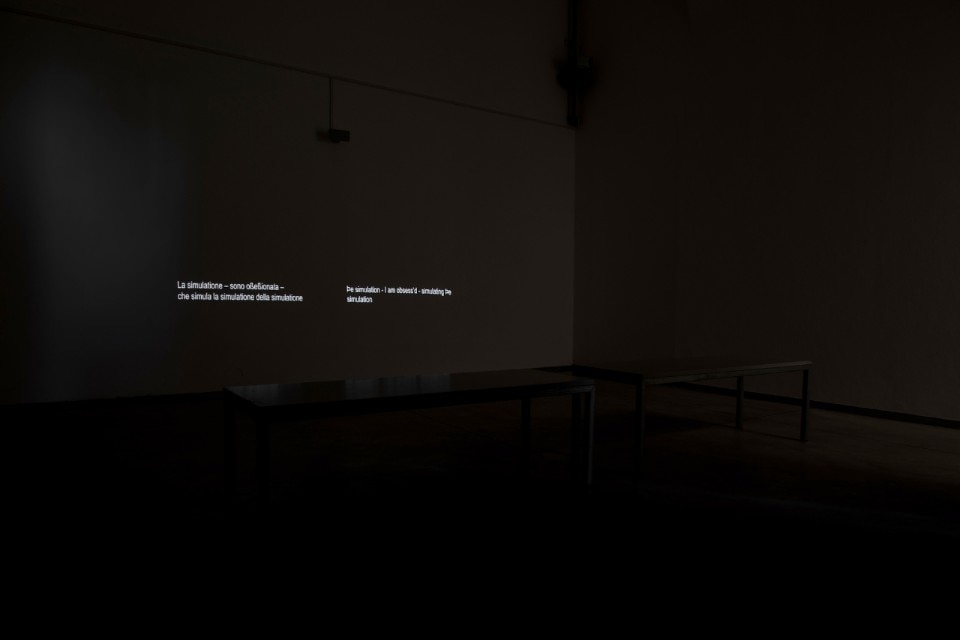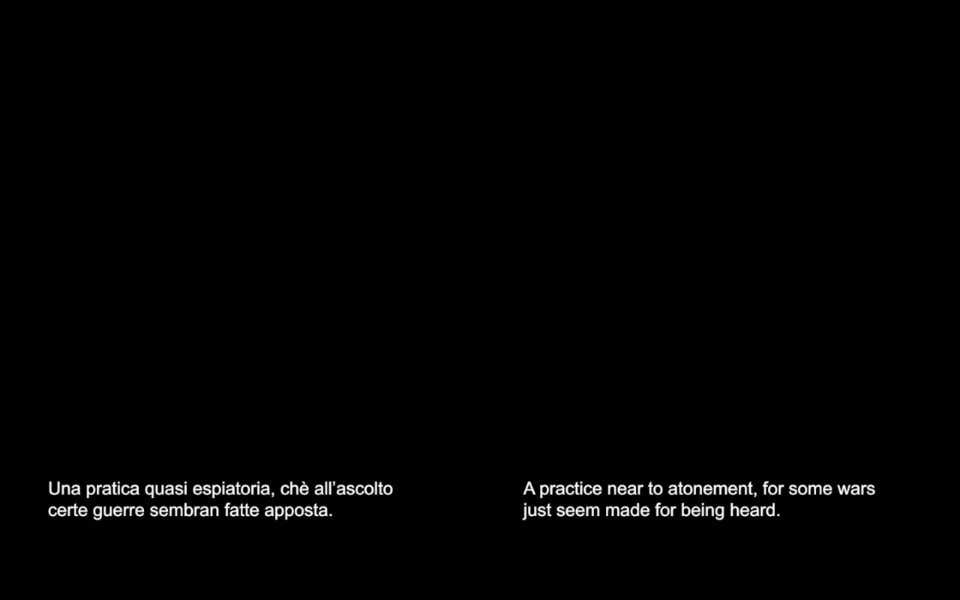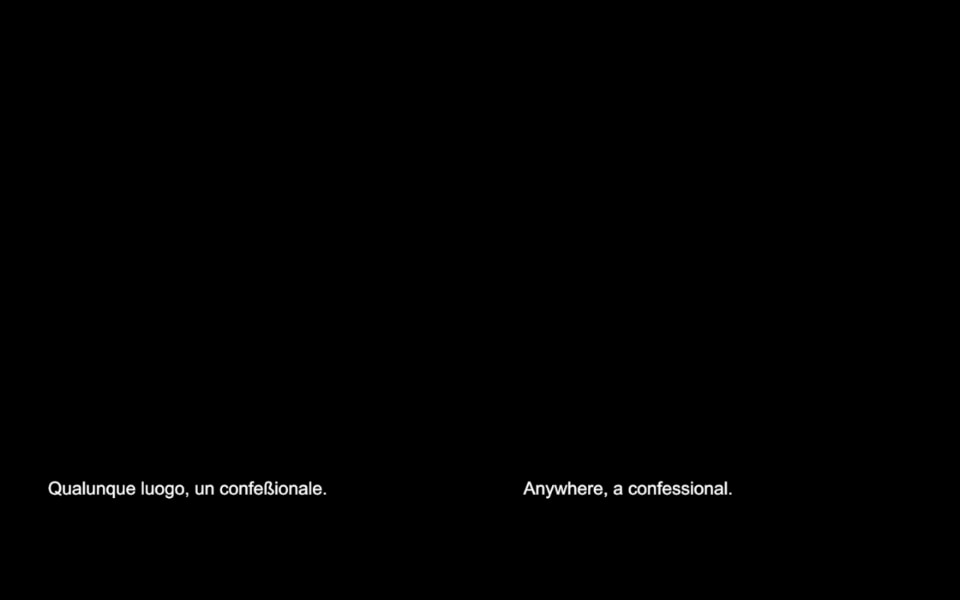The ALMARE collective was formed in 2017 by a group of fellow students at the Turin Conservatory, Amos Cappuccio, Luca Morino and Gabriele Rendina Cattani. They were later joined by curator Giulia Mengozzi. Their shared goal was to devote themselves entirely to sound, studying its applications in different creative fields, in order to understand its more political implications.
Placing sound at the centre of their research, they venture into areas that are sometimes visionary. This is the case with ALMARE’s latest project, Life Chronicles of Dorothea Ïesj S.P.U., a science fiction audio story produced for the group exhibition Waves Between Us, held in 2020 at the Fondazione Sandretto Re Rebaudengo. The audio story is set in a dystopian future, in which the dream of extracting sound from matter has come true, resulting in a black market of sounds imprinted on amphorae, ancient artefacts and all kinds of objects from different eras.
“Today, the term archaeoacoustics”, explains Almare, “describes a new branch of archaeology that investigates the acoustics of ancient sites and artifacts. It focuses on the relationship between sound and architecture in antiquity and on how the study of sound can help us understand the social and ritual functions of ancient sites”.
However, back in the early 20th century, this term referred to an underworld of pseudo-disciplines that theorised the possibility of tracing and recovering sounds engraved in matter. Though this was never scientifically proven and validated, the hypothesis has nevertheless informed a series of legends in popular culture – TV series, films, video games about involuntary recordings scattered in matter, voices of great thinkers embedded in ancient vases, conspiracy theories and so on.
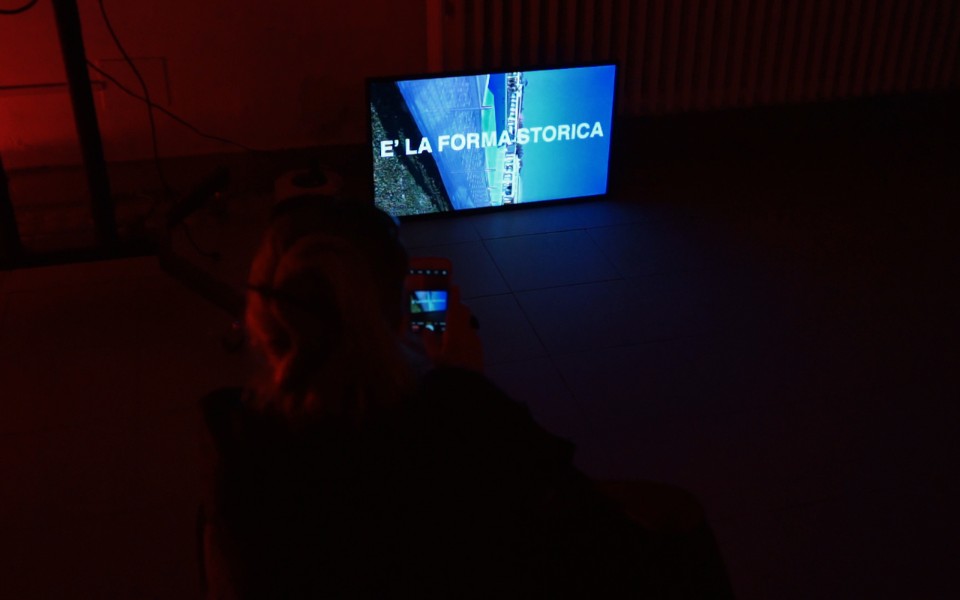
What attracted you to archaeoacoustics so much that you dedicated a project to it?
We’d been talking about the concept of sound recording for some time. We often found ourselves thinking about the performativity of recorded sounds, the relationship between the listener and the re-producer of a sound and how technology inevitably changes our relationship with ourselves. Much of the research into sound recording in the nineteenth century came out of a clear interest in paranormal phenomena, particularly in the possibility of accessing the world of the dead through technology. In 1857, Édouard-Léon Scott de Martinville patented a device that was able to engrave sound. However, he was unable to develop his technology to the point where the engraving could be played back. It was only with Edison that this second stage of the process was developed. For the first time, it became possible to listen to a voice from the past. Archaeoacoustics fascinated us precisely because, in some way, it represents the explosive culmination of all these elements.
How did you come up with the plot of the Chronicles?
We started thinking about an imaginary future in which, thanks to a specific technology that we called ECHO (Equalized Control Of Hierarchic Oscillations), sound is extracted and recovered from the most diverse objects and stored in cities, underground. Then we asked ourselves what consequences this would have in terms of control and monitoring. Like in most science fiction, we started from the present and our socio-economic system, which already makes extensive use of data conveyed through the voice, non-consensual recordings and voiceprints. Self-tracking is already happening and our recordings belong to the sphere of archaeology, because, within minutes, they are no longer situated in the present, but are already part of a progressively obsolete past.
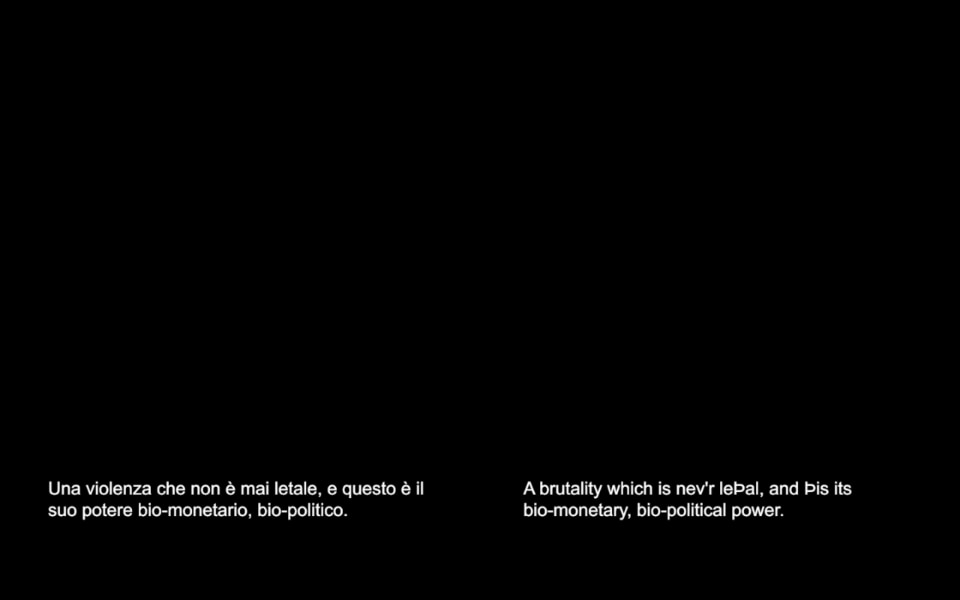
In your audio story you say “[...] sound does not kill [...] and is therefore in fact a weapon’. Is sound so dangerous?
The French theorist and economist Jacques Attali, who focused extensively on the relationship between sound and social dynamics, stated that “sound has always had the body as its only subject”. This is what we refer to when, in one of her monologues, Dorothea says that “the ear is a constantly invaded territory, an easy target: you cannot shut it, you cannot choose what to hear. Shaping sound then means shaping the ear, shaping social behaviour, social interaction, shaping the real.” Our body is constantly exposed to sound, it is constantly subjected to frequencies – whether or not we can perceive them. This is true even on the rare occasions when we use advanced acoustic insulation technologies – think of the famous anecdote in which John Cage recounts that in the anechoic chamber he could hear the otherwise imperceptible sounds of his cardiovascular and nervous systems. All of this means that the relationship between body and sound is characterised by an inevitable ambivalence: sound is outside of us and inside us at the same time, it travels through us. Sound has the ability to change our perception, our memory, creating a bridge between what is inside and outside us. Sound is, in essence, extraordinarily pervasive, and that’s precisely why devices have been created and implemented that use sound as a weapon, exploiting our perceptual mechanisms.
Our audio story is really a broad fictional speculation starting with this exact question. We may add that something similar is already happening with data capitalism.
When is this practice applied?
With grenades, music played extremely loud for a long period of time, tank simulations and other such devices: when one cannot escape a sound that is causing them pain, discomfort or physiological imbalance, they are probably within the range of a weapon. Those who use these tools (army, police, paramilitary groups...) defend themselves by saying they are ‘non-lethal weapons’, diminishing their offensive capabilities. They would like their use to be legitimised in a more relaxed way, so to speak – for example, in civilian contexts. In the short term, these tools can cause dizziness, loss of balance, nausea, and it is not uncommon for victims to develop symptoms of a post-traumatic stress disorder. There is a long history of sound weapons and anyone who wishes to know more about the topic should definitely read two texts on which we have drawn on for this work and which, in general, we consider fundamental to the issue: Sonic Warfare by Steve Goodman and Sound as a Weapon by Juliette Volcler.
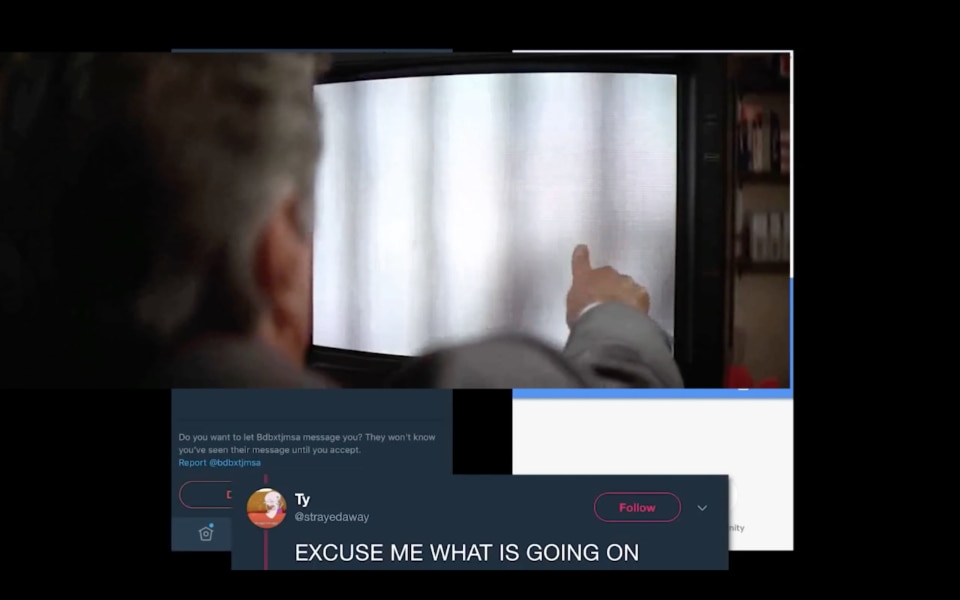
In the fictional world of Dorothea Ïesj S.P.U., the pargoli, i.e. parts of sound extracted from matter, can be worth a lot and are also the object of smuggling. Where does the preciousness of this material come from, in your view?
Their value has nothing to do with sound itself. Within history, it is comparable to the smuggling of historical and archaeological finds, stolen for the purpose of collecting, speculation, or even blackmail.
In Dorothea’s world, one is able to retrieve a plethora of sound-information from any surface. Consequently, every object carries with it the history of all its ‘transactions’: one can extract the voices of the people who made it, those who came into possession of it, the sounds that surrounded it, even the spiders and flies that landed on it. The notion of value is key because the exchange, or sale, of these sounds implies a hierarchy of value of the infinite information that can be extracted. Sound thus becomes a sort of seal, a speaking relic, an allegorical good, an immaterial currency whose value is proportional to its ‘vocality’. Moving away from the plot of the Chronicles itself , we are interested in the link between data capitalism, language and the creation of value, and how finds that are considered “archaeological” are a tool of language construction, of memory simulation, that corroborates, and therefore an instrument of power. For Benjamin, “memory is not an instrument for discovering the past, but rather a medium”. We might add, quoting Klossowski, that memory is the currency of history – its fiat money.
A fascinating fact in the Life Chronicles of Dorothea Ïesj S.P.U. is precisely the possibility – which is currently impossible but plausible – of extracting sound from matter. Let’s imagine this happened in the real world for a moment. Do you think it would have some benefits, for example in the study of past events, or would it negatively affect humanity?
Our audio story is really a broad fictional speculation starting with this exact question. We may add that, as we mentioned before, something similar is already happening with data capitalism. Like any technology, it is both ambivalent and oracular, also in a moral sense. 30 years ago, most of the technologies developed and widespread today were undoubtedly ‘predictable’. But their positive and negative implications are not the point. Technology is both active and passive. We are always affected by what we develop. To make use of something is also to be its medium.
Your work explores an experimental field.
The writer Octavia Butler said she became interested in science fiction writing because in that field, anything was possible. There were no walls to constrain her and there was no human condition that she was forbidden from exploring, or investigating. And we like to hope that our science fiction story too can function as a vector of knowledge, as an imaginative projection concerning the generative potential, the socio-political consequences and even the risks that might follow the large-scale application of certain contemporary technologies.
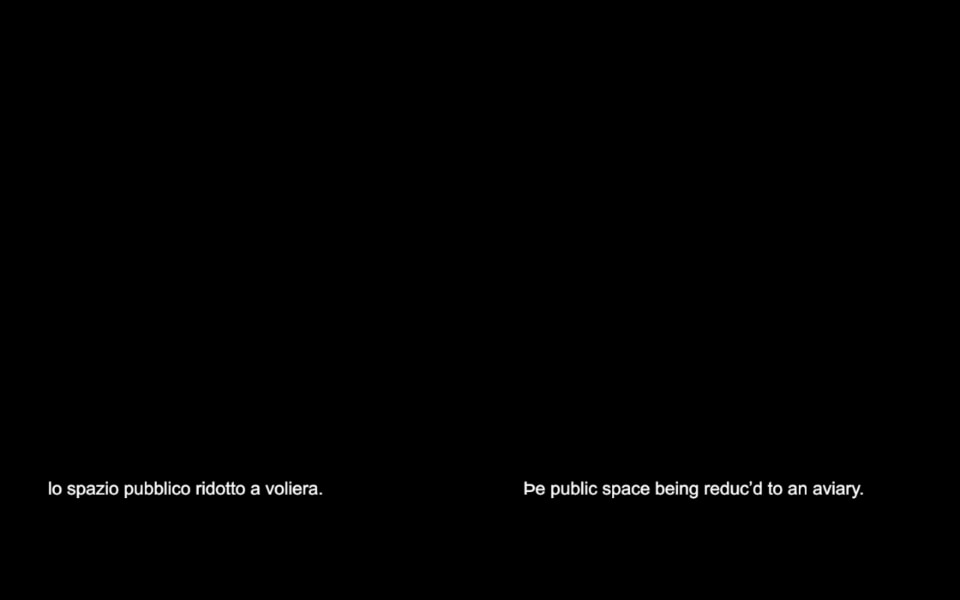
What do you mean exactly?
For us it was important, for example, to try to observe the logic of the enormous political device that is the current data economy. We believe that science fiction is a powerful creator of worlds, a filter for testing , through the expansion of its users’ imaginations, perspectives that are improbable, or exquisitely applicable to specific niches of knowledge. The part of our project that we most believe in, in fact, is the ability to generate knowledge on issues related to the field of technology (and not only), by visualising them through a science fiction narrative. Actually, in our case, it would be more correct to say ‘sounding them. With the expression ‘science fictional behaviour’, the young writer and activist Adrienne Maree Brown refers to the work and daily practice of many activists interested in the way our actions and beliefs, today, can shape the future, starting from the idea that none of one’s hopes for humanity, one’s visions, could become reality, without the possibility of imagining them. “Science fiction”, she writes, “is simply a way of practicing the future together”.
Apart from Life Chronicles of Dorothea Ïesj S.P.U., which you will continue in several episodes, do you have other projects in the works?
At the moment we are focused on Chronicles, on which we hope to return to work as soon as possible. This project has brought together so many different lines of research that we were pursuing previously, it’s as if it has “cannibalised” everything! We will mention, however, that for some time now we have been collaborating with the researcher and videogame expert Angelo Careri to develop a video game that focuses on the notion of sound and space in the gameplay experience. We hope to start working on this project again very soon, pandemic permitting.
You can listen to the first episode of Life Chronicles of Dorothea Ïesj S.P.U on wavebetweenus.com


